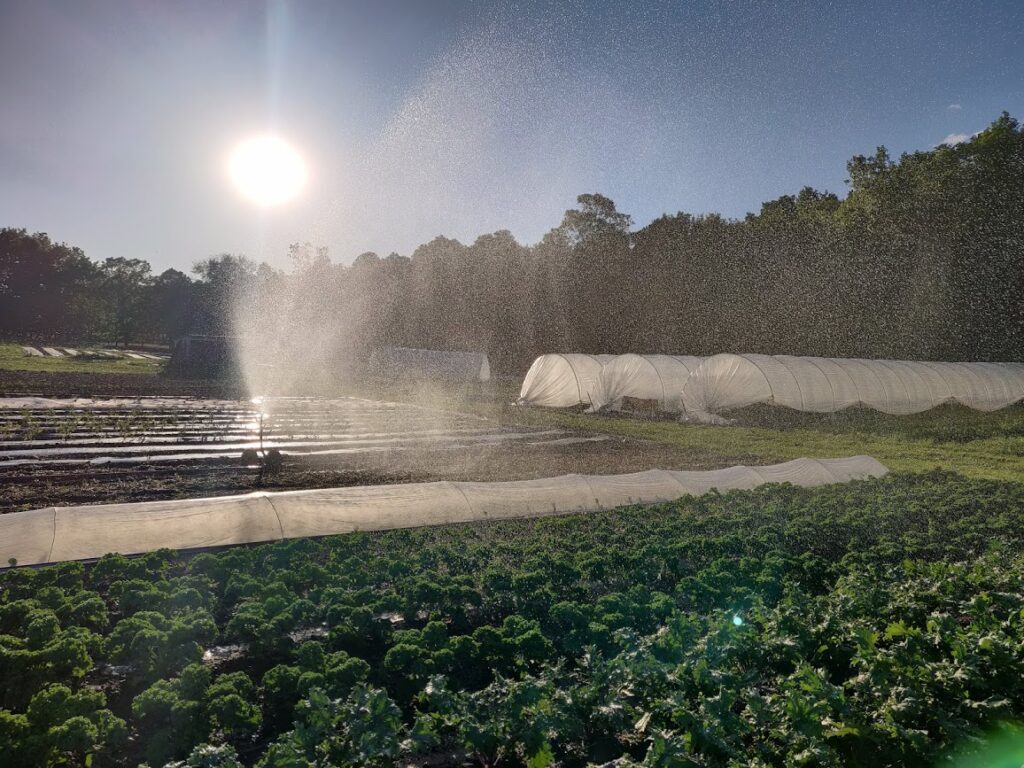How do we irrigate our CSA fields?
How do we irrigate our CSA fields?
We use three different methods for watering. The first method is drip tape, a thin plastic tube with regularly spaced holes that emit drops of water. We use drip tape for crops like squash, tomatoes, peppers and eggplant that we plant into plastic mulch. These crops benefit from the extra heat and weed suppression provided by the plastic mulch, but the mulch prohibits water from infiltrating so we put drip tape under the plastic mulch. Because drip tape and mulch are a significant expense not just to buy but also to install, we only use it on long season crops where we will get the most bang for our buck. We plant about an third of our crops using drip tape, which uses the least amount of water, is the best for preventing disease but is also the most expensive.
The second method is movable solid set, which is a series of impact sprinklers. We set up this system direct seeded crops like carrots that need consistent moisture to germinate. We can quickly install the solid set, which allows us to water daily for the two weeks needed to get the crop to germinate and establish without moving hoses or the gun. We only water a few thousand square feet at a time with this system before it gets moved to the next field and that crop is covered by our last, and main, irrigation method.
The third and our most used method is overhead watering with our large impact sprinkler or gun (the actual industry term). This giant impact sprinkler emits 40 gallons of water a minute and covers a circle 110 feet in diameter. It's fed water by 2 inch diameter hoses, pumped from our reservoir by our pump and generator. This is our main method for irrigation because it is highly flexible, in that it can go anywhere quickly and can cover a range of areas and water amounts. Its also the most affordable since it requires no upkeep outside of pumping water and rarely breaks.
Each irrigation method is matched not just to the crop, but to the crop's life stage, the soil quality and more. Each system has advantages and disadvantages, and as we have used each system more we have learned more about how to get the most out of them.



 Print
Print Email
Email

